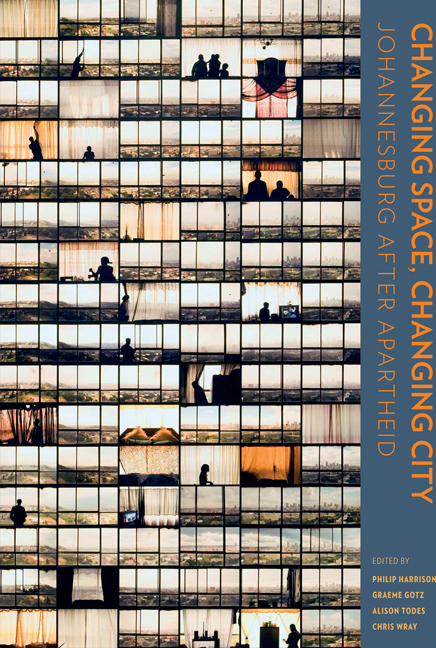Book contents
- Frontmatter
- Contents
- Preface
- Cartography
- 1 Materialities, subjectivities and spatial transformation in Johannesburg
- Section A The macro trends
- 2 The ‘thin oil of urbanisation’? Spatial change in Johannesburg and the Gauteng city-region
- 3 Poverty and inequality in the Gauteng city-region
- 4 The impact of policy and strategic spatial planning
- 5 Tracking changes in the urban built environment: An emerging perspective from the City of Johannesburg
- 6 Johannesburg's urban space economy
- 7 Changes in the natural landscape
- 8 Informal settlements
- 9 Public housing in Johannesburg
- 10 Transport in the shaping of space
- 11 Gated communities and spatial transformation in Greater Johannesburg
- Section B Area-based transformations
- Section C Spatial identities
- Contributors
- Photographic credits
- Acronyms
- List of plates
- List of figures
- List of tables
- Index
7 - Changes in the natural landscape
from Section A - The macro trends
Published online by Cambridge University Press: 20 April 2018
- Frontmatter
- Contents
- Preface
- Cartography
- 1 Materialities, subjectivities and spatial transformation in Johannesburg
- Section A The macro trends
- 2 The ‘thin oil of urbanisation’? Spatial change in Johannesburg and the Gauteng city-region
- 3 Poverty and inequality in the Gauteng city-region
- 4 The impact of policy and strategic spatial planning
- 5 Tracking changes in the urban built environment: An emerging perspective from the City of Johannesburg
- 6 Johannesburg's urban space economy
- 7 Changes in the natural landscape
- 8 Informal settlements
- 9 Public housing in Johannesburg
- 10 Transport in the shaping of space
- 11 Gated communities and spatial transformation in Greater Johannesburg
- Section B Area-based transformations
- Section C Spatial identities
- Contributors
- Photographic credits
- Acronyms
- List of plates
- List of figures
- List of tables
- Index
Summary
The City of Johannesburg stretches approximately 80 km in length and 50 km in width along a diagonal north-east/south-west bearing. Its elongated form covers an array of topographical, geological, vegetative, soil and climatic zones. Zonal differences are visible, for example, in the denser vegetation north of a line of ridges that cuts in an east-west direction across the centre of the city, the concentration of grasslands in the south and south-west, and the natural wetlands and lakes in the south-east (Plate 40). The variety in the physical geography and the natural environment reflects to some extent the impact of human settlement in the region, especially since the late 1800s, as well as the choices that have been made around the planning and design of these settlements. The characteristics of the physical environment also recursively shape the possibilities and prospects for the human interventions that impact on nature and on the city's natural assets.
Unfortunately, as I show in this chapter, many of the historical and even some of the present planning and development decisions and actions shaping space in Johannesburg take little cognisance of the physical constraints implied by the pre-existing natural forms and features on which the city is built. This is apparent both at the settlement level, for example with respect to where certain urban forms are allowed to exist, as well as at the level of the urban fabric, where interventions such as greening of neighbourhoods through tree-planting initiatives are applied. Contradictions between the physical nature of the city and the urban planning processes sometimes lead to unexpected or undesired results. If some of the difficulties in the way the city interacts with its natural environment are to be overcome, the differences in the geographical expanse of the city and the limits implied by each of the city's varied geologies, topographies and ecosystems, have to be taken into account when spatial policy is developed and planning decisions are made.
I cover three matters in this chapter. In the first section I provide an overview of the natural environment, highlighting key geological, climatological and ecological characteristics across the city, and the most important implications thereof for human settlement planning and design.
- Type
- Chapter
- Information
- Changing Space, Changing CityJohannesburg after apartheid, pp. 137 - 153Publisher: Wits University PressPrint publication year: 2014



